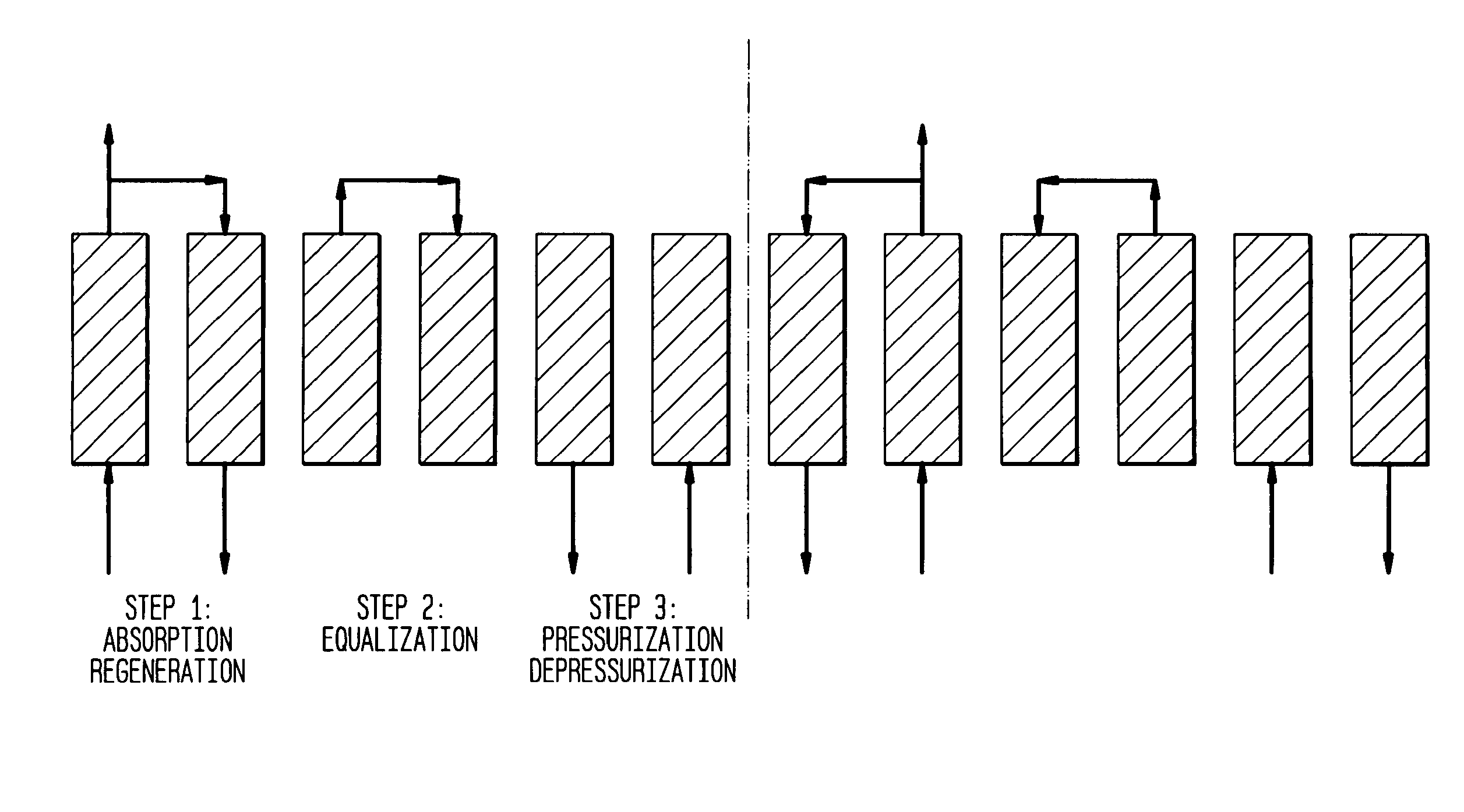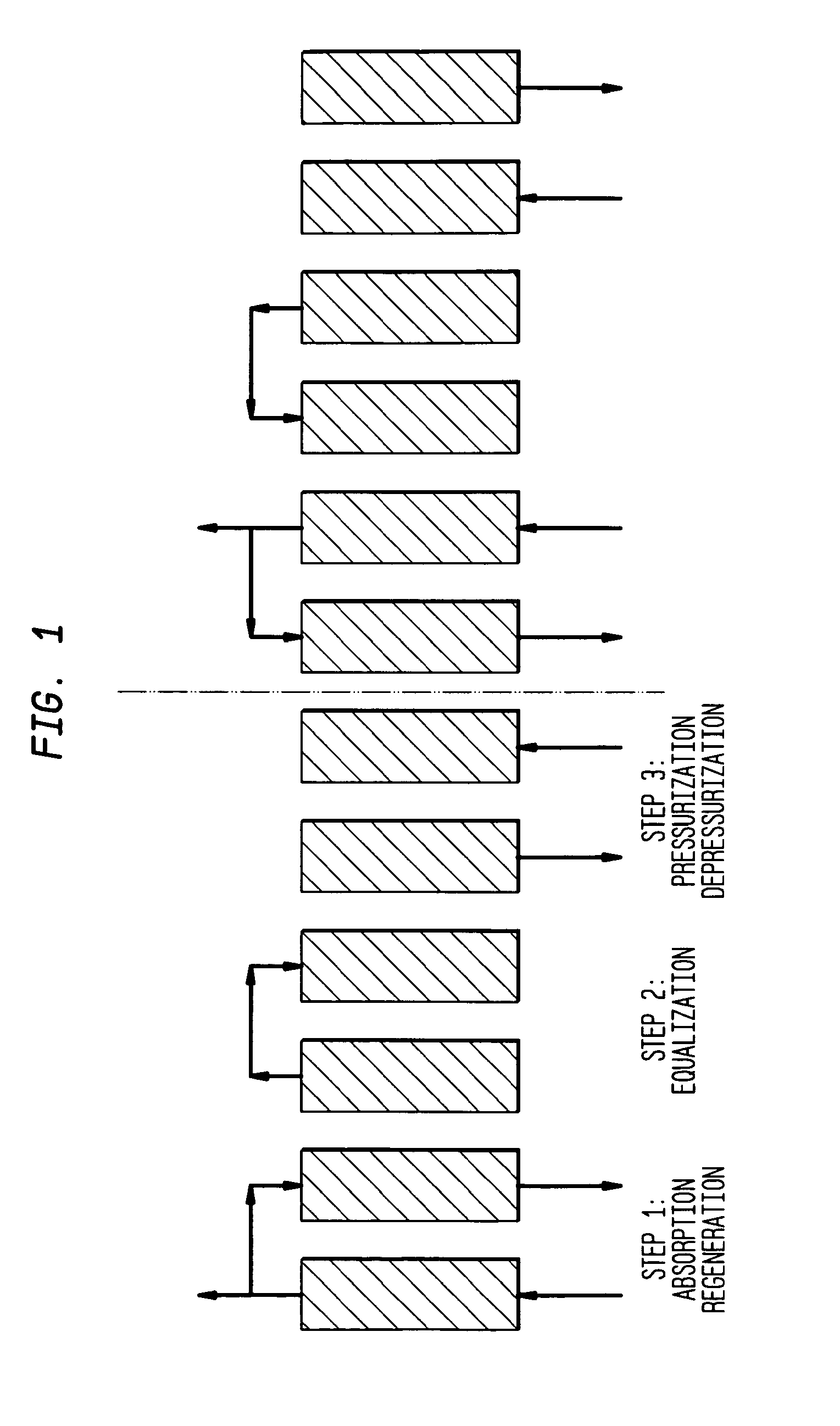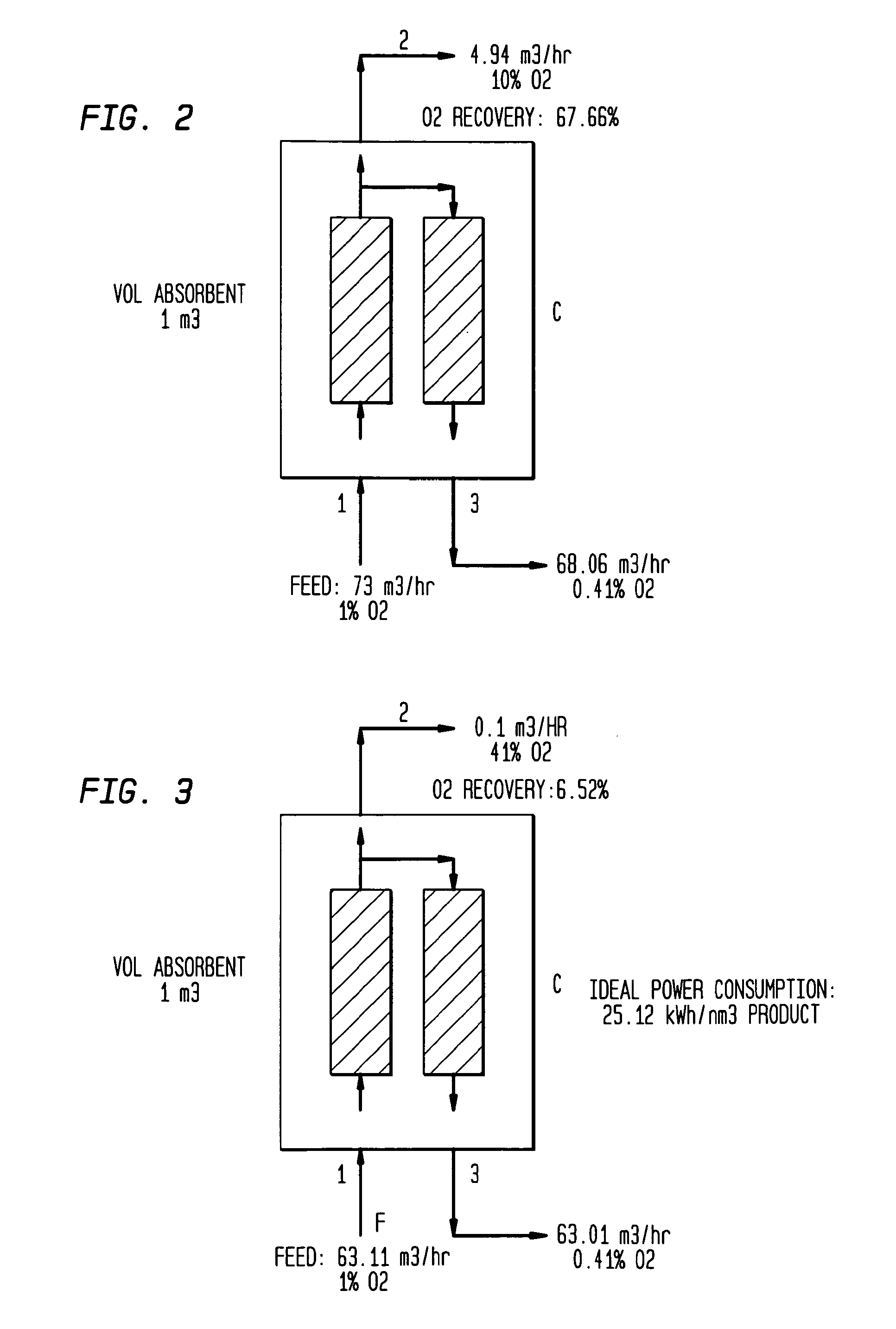Gas recovery process
a gas recovery and gas technology, applied in the direction of separation processes, oxygen/ozone/oxide/hydroxide, dispersed particle separation, etc., can solve the problems of psa/vsa being generally not considered a viable technology, and requiring the energy intensive liquefaction of the whole feed stream
- Summary
- Abstract
- Description
- Claims
- Application Information
AI Technical Summary
Benefits of technology
Problems solved by technology
Method used
Image
Examples
example 6
[0052]FIG. 7, shows schematically the addition of a recovery (R) unit to the system depicted in FIG. 6 with again the goal to increase the oxygen concentration of the feed from 2% to 22%. The feed, product and waste streams of the recovery unit are numbered 101, 102 and 103, respectively. The recovery VSA unit is in series with the concentration VSA unit and connected with recycle from the concentration unit. In detail, the waste stream from the concentration unit (line 3) is connected to the input of the recovery unit (line 101) and the product stream from the recovery unit (line 102) is mixed with the external feed (F) to provide the feed to the concentration unit (line 1). The results of the simulation show that the total recovered oxygen under these conditions would be 95%. This Example is for illustrative purposes demonstrating that the addition of recovery unit leads to a significant increase in the yield of the desired product. To fully achieve the targets of this invention, ...
example 7
[0053]In FIG. 8, there is shown a system of the current invention, in which a two-stage VSA recovery unit (comprising recovery stages R1 and R2) is combined with two-stage VSA concentration unit (C1 and C2) with recycle of the external waste stream from the concentration unit (line 3) to the external input of the recovery unit (line 110) and connection of the external output of the recovery unit (line 112) to the external input of the concentration unit (line 1) The results of the simulation show an oxygen purity of 95% can be achieved at an overall yield of 91.8% under these conditions from a feed stream with an oxygen concentration of 1%. Comparison of the results from this Example with those from Examples 1 to 4 clearly demonstrates the advantages of the current invention over prior art PSA or VSA systems in obtaining a valuable product at high purity and high yield from a dilute mixture of this product with other gases.
example 8
[0054]In FIG. 9, there is described a system of the current invention that utilizes a single stage VSA recovery unit (R) in combination with a 4-stage VSA concentration unit (C1-C4) in order to recover Ar-40 which is present at 0.1% level in waste gas from helium production. The lines are numbered analogously to those in the earlier Figures. The results of the simulation showed that the very valuable Ar-40 isotope could be recovered at 99% purity with an overall yield of 89% from this very dilute source.
PUM
| Property | Measurement | Unit |
|---|---|---|
| temperatures | aaaaa | aaaaa |
| temperatures | aaaaa | aaaaa |
| temperatures | aaaaa | aaaaa |
Abstract
Description
Claims
Application Information
 Login to View More
Login to View More - R&D
- Intellectual Property
- Life Sciences
- Materials
- Tech Scout
- Unparalleled Data Quality
- Higher Quality Content
- 60% Fewer Hallucinations
Browse by: Latest US Patents, China's latest patents, Technical Efficacy Thesaurus, Application Domain, Technology Topic, Popular Technical Reports.
© 2025 PatSnap. All rights reserved.Legal|Privacy policy|Modern Slavery Act Transparency Statement|Sitemap|About US| Contact US: help@patsnap.com



